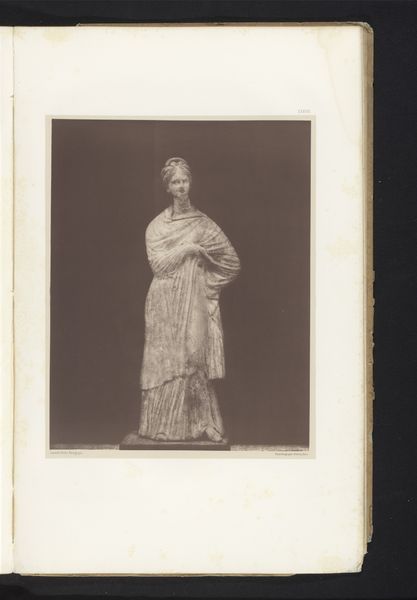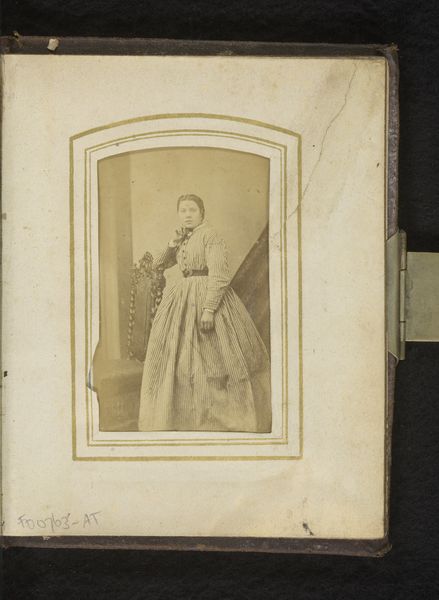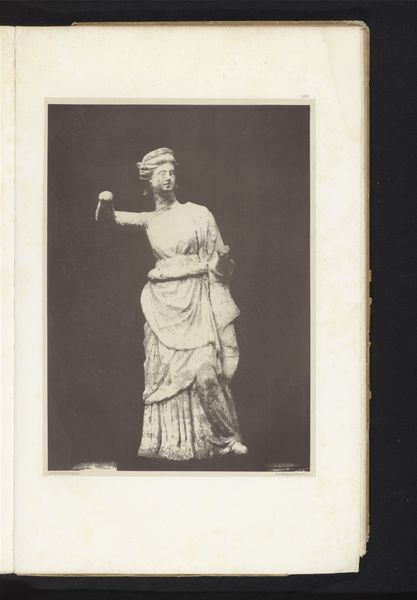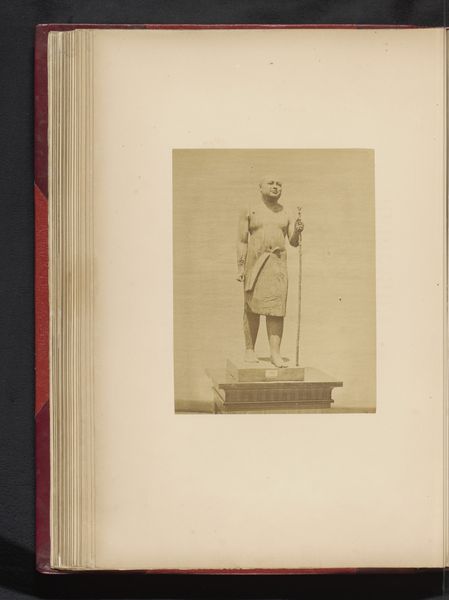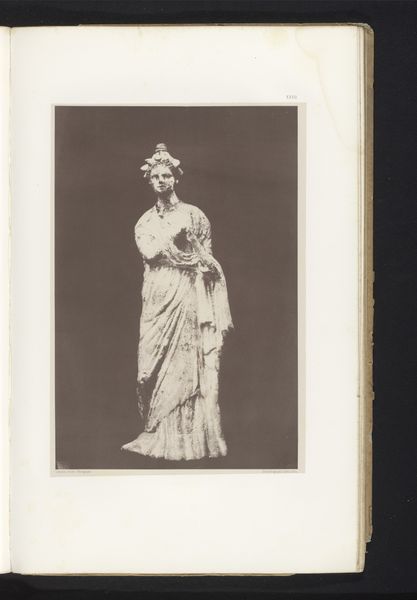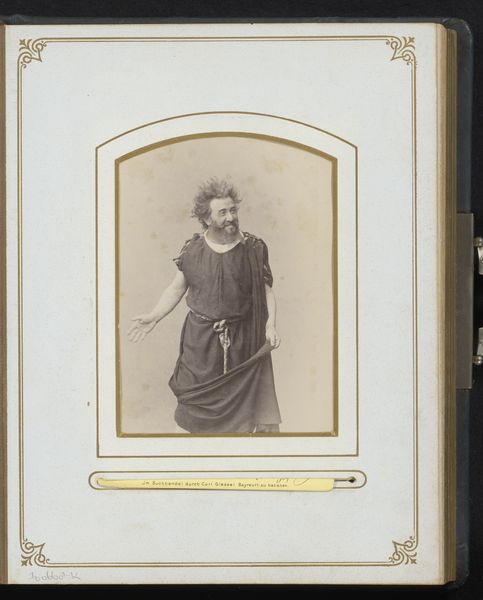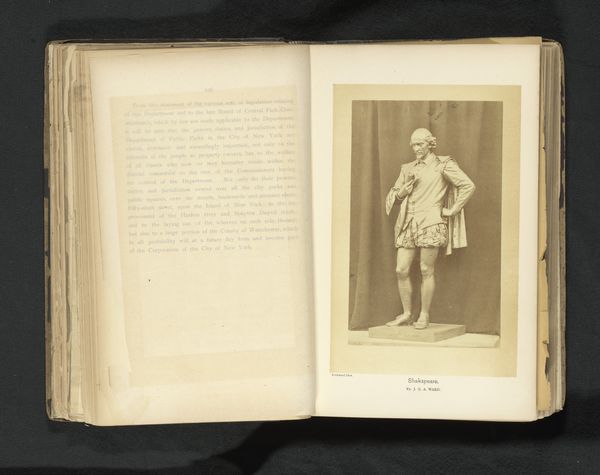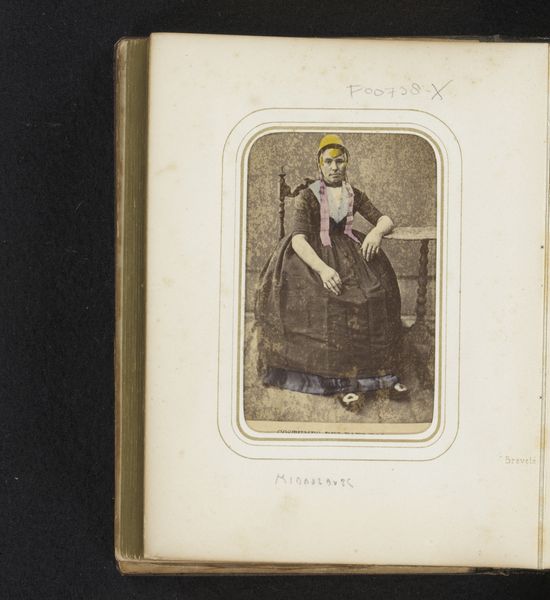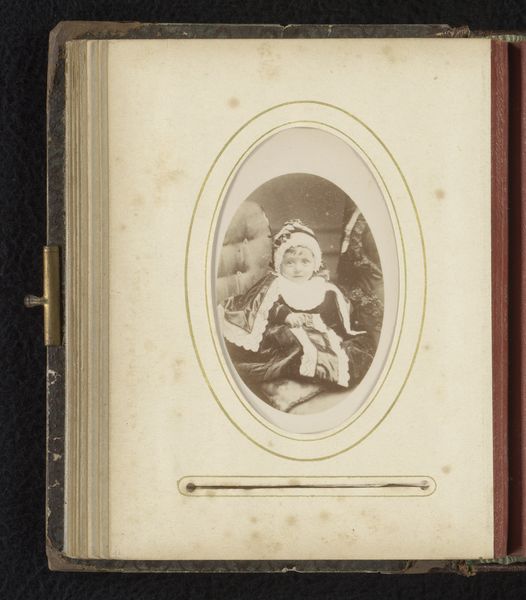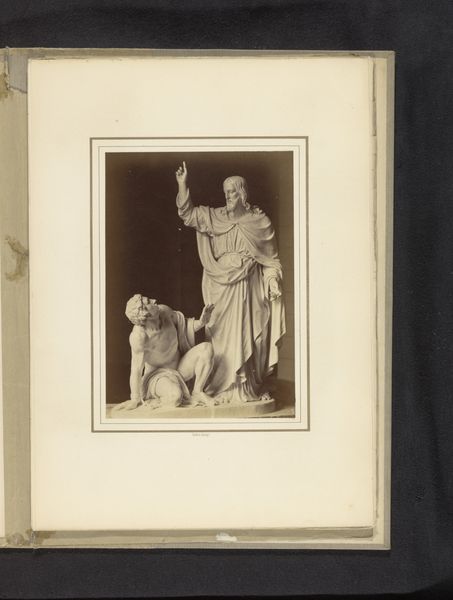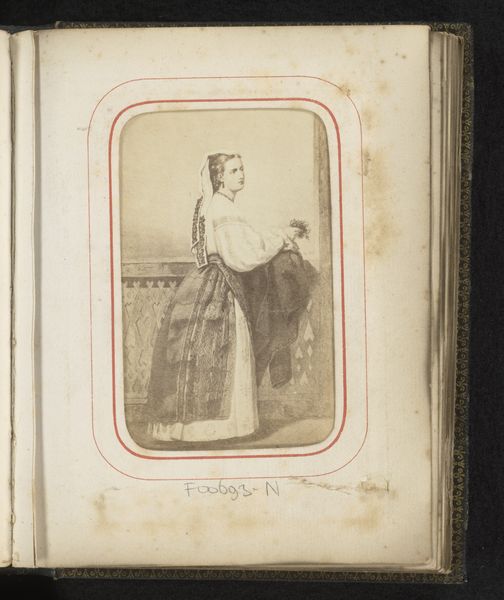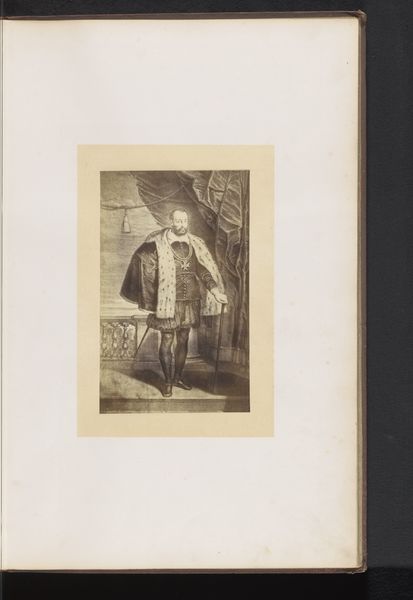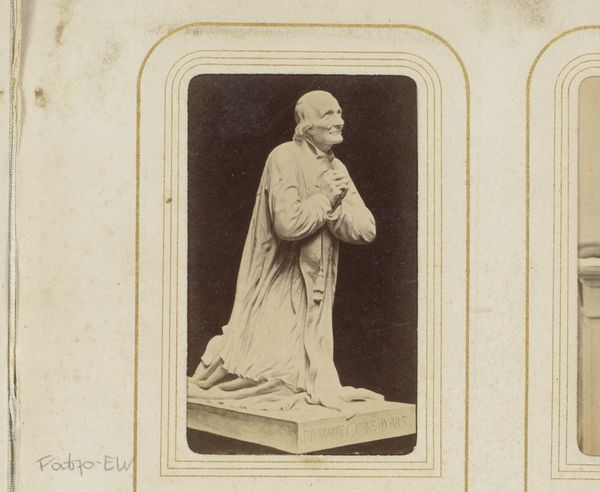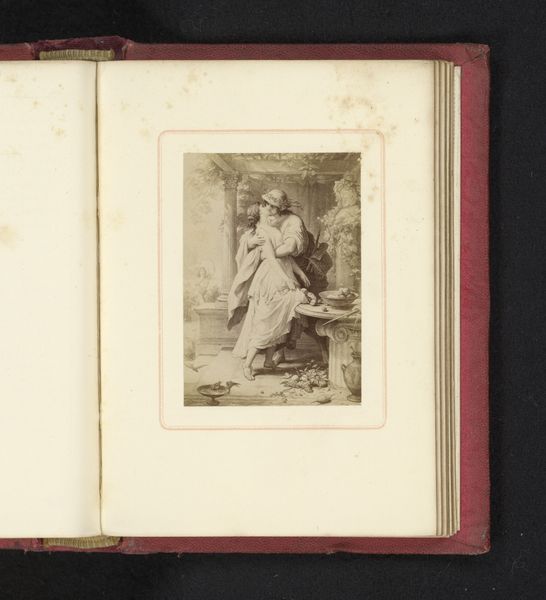
Dimensions: height 134 mm, width 96 mm
Copyright: Rijks Museum: Open Domain
Curator: Here we have an albumen silver print titled "Monument," dating from 1871 to 1885, credited to F. Jamrath und Sohn. Editor: My first thought is how… static it feels. The grayscale flattens what I imagine was meant to be a very imposing, three-dimensional sculpture. I am drawn to its potential as material. Curator: It certainly speaks to a certain tradition, wouldn’t you say? Neoclassical in its approach, a style heavily favored in representing civic leaders at that time. This gelatin silver print reproduction would have served a public function. It was a method to make public art even more public, don't you think? Editor: Exactly, but it also strikes me that it's only presenting us with the completed item. What about the making process, what kind of labor went into creating this statue initially and later reproducing it? I imagine this sculpture as potentially cast out of bronze, or laboriously sculpted from stone, but also the work necessary to achieve such a clear, precise photo. It would give the piece an entirely new viewpoint. Curator: That's very insightful. Contextually, such sculptures were meant to inspire specific virtues—duty, honor—ideals that shaped civic discourse, in a relatively new nation at this time. These reproduced photographic prints aided and enhanced the spread of such messages in this case. It aided public image building as part of its own consumption Editor: Right, that almost seems in contradiction with its classical leanings and imagery, which were built from manual craft; labor made by people as opposed to machines. I also keep imagining the feel and heft of this sculpture in hand – smooth and possibly polished, maybe it gets pitted and worn as well as weathered, which a photograph simply cannot transmit. Curator: I see your point. Perhaps we are losing something of its tactile essence by solely looking at its image. The choice of that neoclassical language here for its monumental quality reinforces its social function – which photography simply continues to amplify. Editor: So the image’s function, just as much as the sculpture itself, relies on all this underlying infrastructure, from mining for raw material to studios and dark rooms. That transforms the object itself! I agree the reproduction supports the monumental aura the original aims for. Curator: I suppose in this image, like the statue it captures, reminds us of how much history and social power are packed into one visual form. Editor: I agree that considering these photos through labor makes us look carefully at both the work to create, and the powers such pieces attempt to capture.
Comments
No comments
Be the first to comment and join the conversation on the ultimate creative platform.
